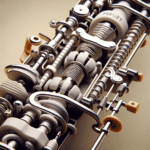As a clarinetist, maintaining your instrument is key to achieving the best sound quality and playability. One often-overlooked aspect of clarinet maintenance is the application of clarinet key oil. Not only does proper lubrication prevent wear and tear on the keys, but it also enhances the overall performance of your instrument. In this guide, we'll explore the types of key oils available, how to apply them, and many tips to ensure your clarinet remains in excellent condition.
Understanding Clarinet Key Oil
Clarinet key oil is made to lubricate the moving parts of your instrument. Over time, the pads and the metal keys can become stiff, affecting how easily they open and close. This stiffness can lead to what's known as “sticky keys,” which can disrupt your playing experience and lead to expensive repairs. Regular application of oil can prevent this issue and extend the life of your clarinet.
Types of Clarinet Key Oils
There are two main types of clarinet key oil you'll come across:
| Oil Type | Composition | Best For | Popular Brands |
|---|---|---|---|
| Light Oil | Mineral base with synthetic oil component | Key mechanisms and rods | Brand X, Brand Y |
| Heavy Oil | Thicker consistency | Pads and moisture-prone areas | Brand A, Brand B |
Both types have their uses, and you might need a mix of both depending on your clarinet and how you play.
How to Apply Clarinet Key Oil
Applying clarinet key oil is simple. However, it's important to follow these steps to do it right:
- Gather Your Supplies: You'll need key oil, a small cloth or tissue, and maybe a fine applicator like a toothpick or a needle oiler.
- Open Your Clarinet: Carefully take apart the clarinet to access the keys. This might involve removing the barrel and the mouthpiece.
- Inspect the Keys: Look at the keys and their mechanisms for dirt, grime, or any signs of wear. Use a soft cloth to gently clean any visible debris.
- Apply the Oil: Using your chosen applicator, put a small amount of key oil on the pivot points of the keys where they connect to the mechanism. Use just a little—too much oil can build up and attract dirt.
- Move the Keys: After applying oil, gently press the keys to spread the oil evenly across the mechanism. This helps remove any stiffness and allows for smooth motion.
- Wipe Away Excess: Use your cloth to clean off any extra oil to keep it from dripping or attracting dirt.
Best Practices for Clarinet Maintenance
Besides using key oil, here are some tips to keep your clarinet in top shape:
- Regular Cleaning: Clean your clarinet with a swab after each use to remove moisture and debris.
- Check Pads Frequently: Make a habit of looking at the pads for wear and tear, and make sure they're sealing properly.
- Store Properly: Always keep your clarinet in its case when not in use. Watch out for temperature and humidity, as these can really affect your instrument.
- Visit a Professional: Get your clarinet checked by a professional technician at least once a year to keep everything working well.
The Martin Freres Connection
At Martin Freres, we're proud of our high-quality clarinets and we like to help clarinetists get the most out of their instruments. Each clarinet is carefully made, and knowing how to maintain it—especially how to use key oil—can really improve your playing experience.
By learning about the different types of clarinet key oil, how to apply it properly, and following good maintenance habits, you can keep your clarinet in great shape for years. A well-kept instrument is key to getting that beautiful clarinet sound and performance.







